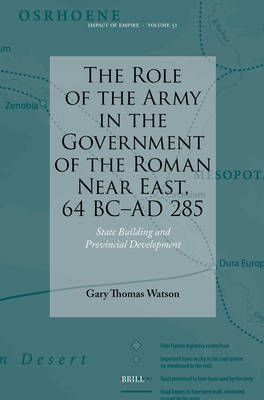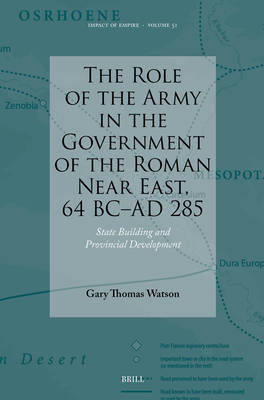
- Afhalen na 1 uur in een winkel met voorraad
- Gratis thuislevering in België vanaf € 30
- Ruim aanbod met 7 miljoen producten
- Afhalen na 1 uur in een winkel met voorraad
- Gratis thuislevering in België vanaf € 30
- Ruim aanbod met 7 miljoen producten
Zoeken
The Role of the Army in the Government of the Roman Near East, 64 BC-AD 285
State Building and Provincial Development
Gary Watson
€ 241,45
+ 482 punten
Omschrijving
This study brings together a wide range of sources in order to understand the basis of Roman rule in the Near-East between 64 BC - AD 285. It provides a model for understanding how Roman frontiers and provinces worked and challenges preconceptions about how provinces were governed. It argues that the military orientation of the provinces meant that the army, and its personnel, were the main agents in developing the provinces and carrying out provincial-level administration throughout the Principate. It tackles the main questions in Roman historiography concerning frontiers, and the nature of provinces, and grounds its arguments in the best available source material from the Near-East and the latest archaeological research. In particular, it utilises the testimony of soldiers and provincials themselves (such as that found in the papyri from Dura-Europos) and offers a fresh perspective on the evidence.
Specificaties
Betrokkenen
- Auteur(s):
- Uitgeverij:
Inhoud
- Aantal bladzijden:
- 366
- Taal:
- Engels
- Reeks:
- Reeksnummer:
- nr. 51
Eigenschappen
- Productcode (EAN):
- 9789004749375
- Verschijningsdatum:
- 18/12/2025
- Uitvoering:
- Hardcover
- Formaat:
- Genaaid
- Afmetingen:
- 155 mm x 235 mm

Alleen bij Standaard Boekhandel
+ 482 punten op je klantenkaart van Standaard Boekhandel
Beoordelingen
We publiceren alleen reviews die voldoen aan de voorwaarden voor reviews. Bekijk onze voorwaarden voor reviews.








